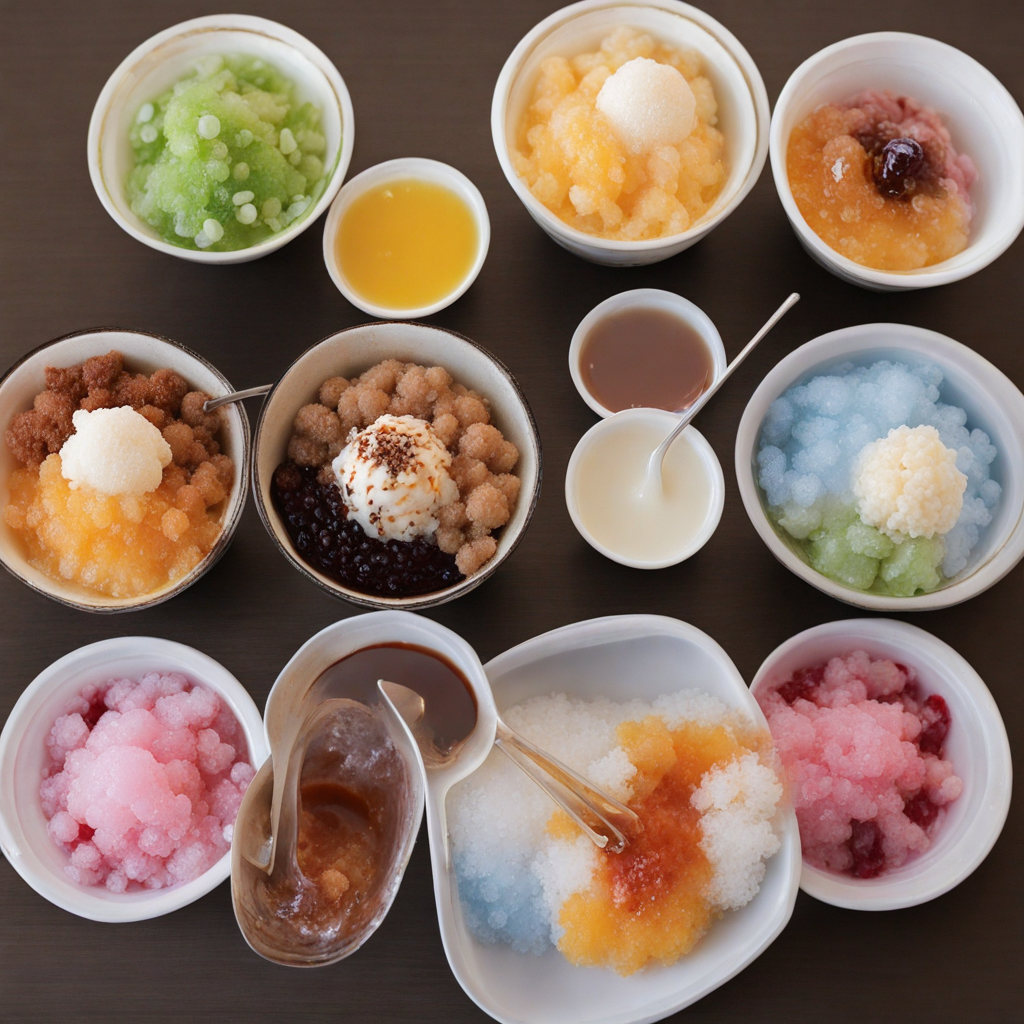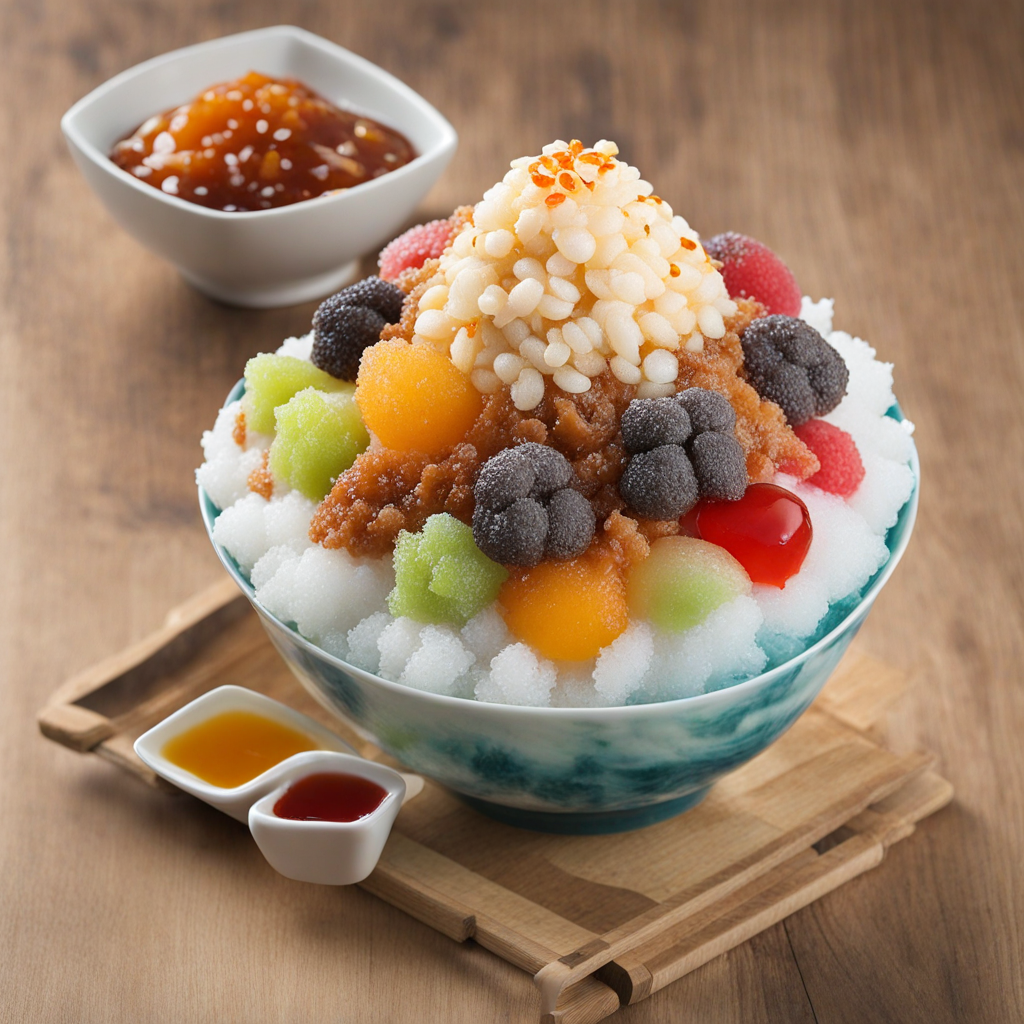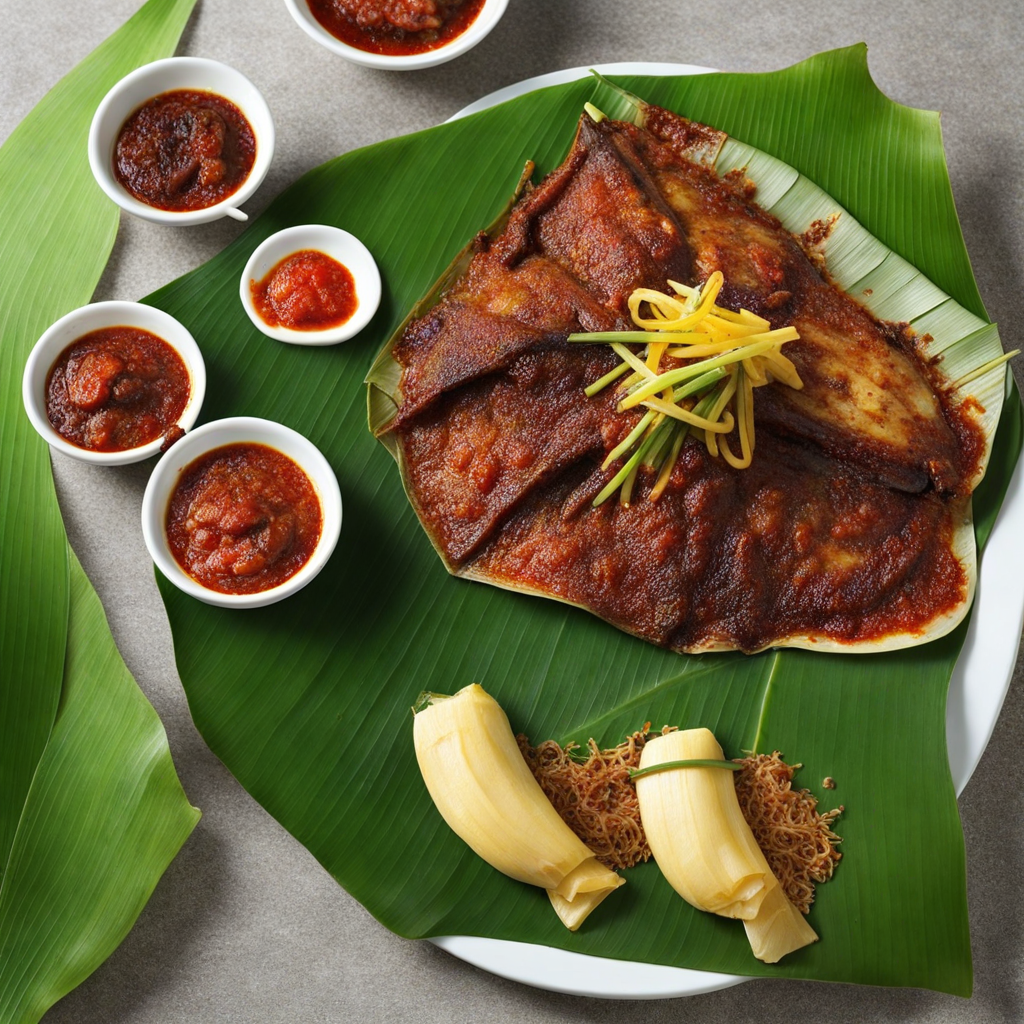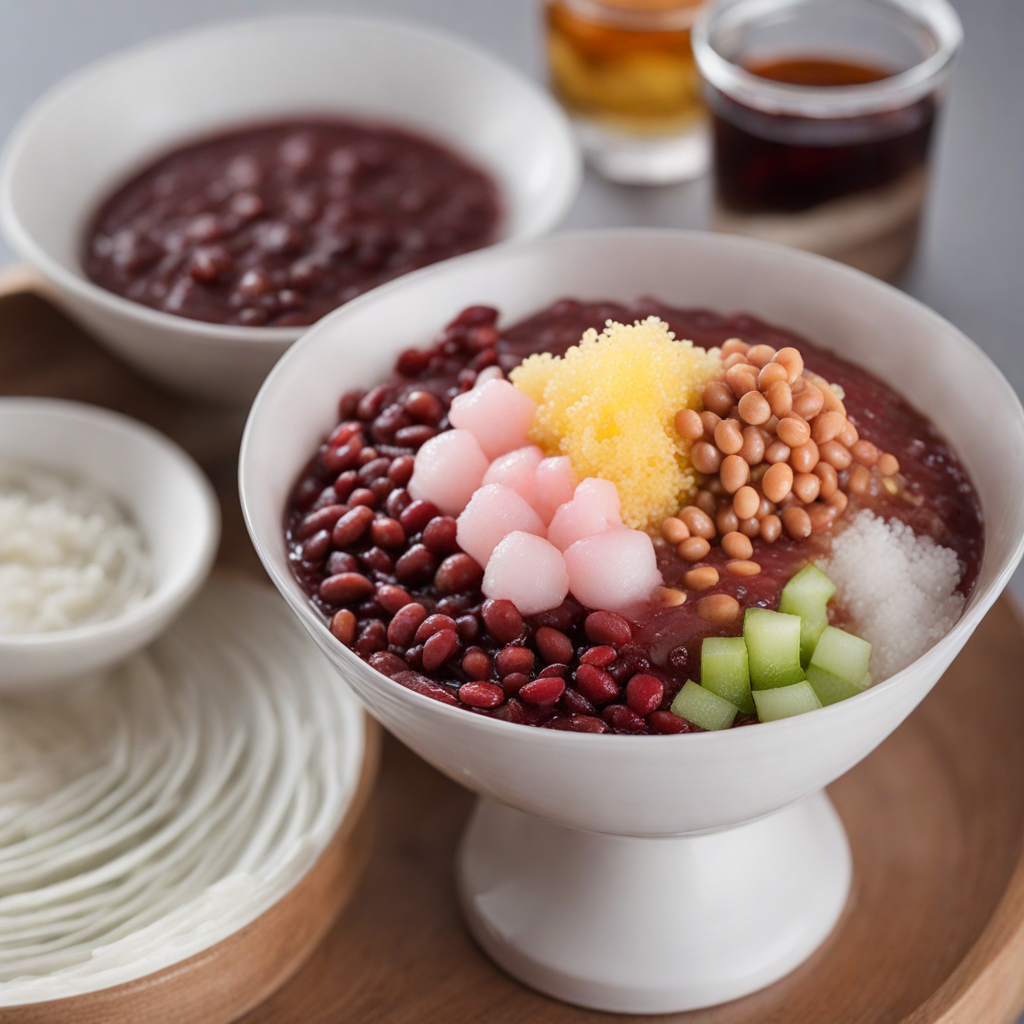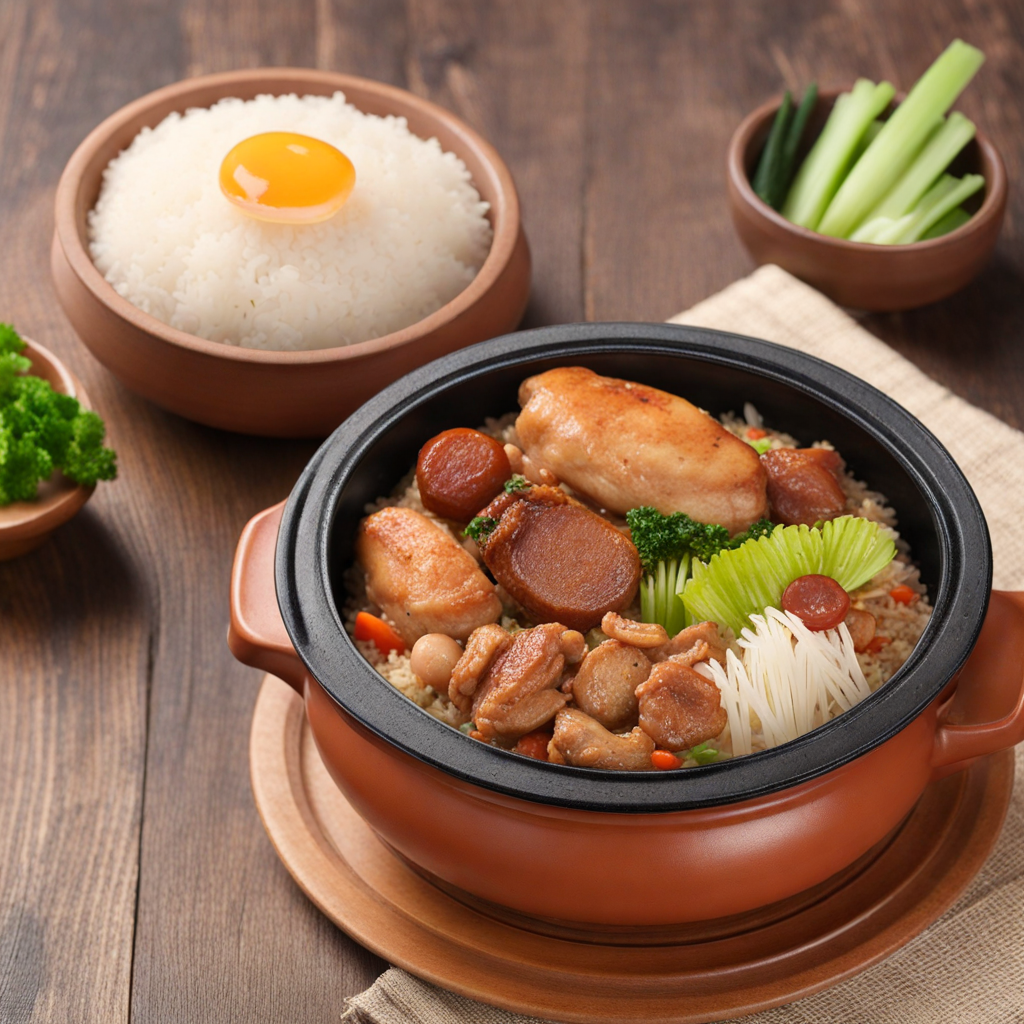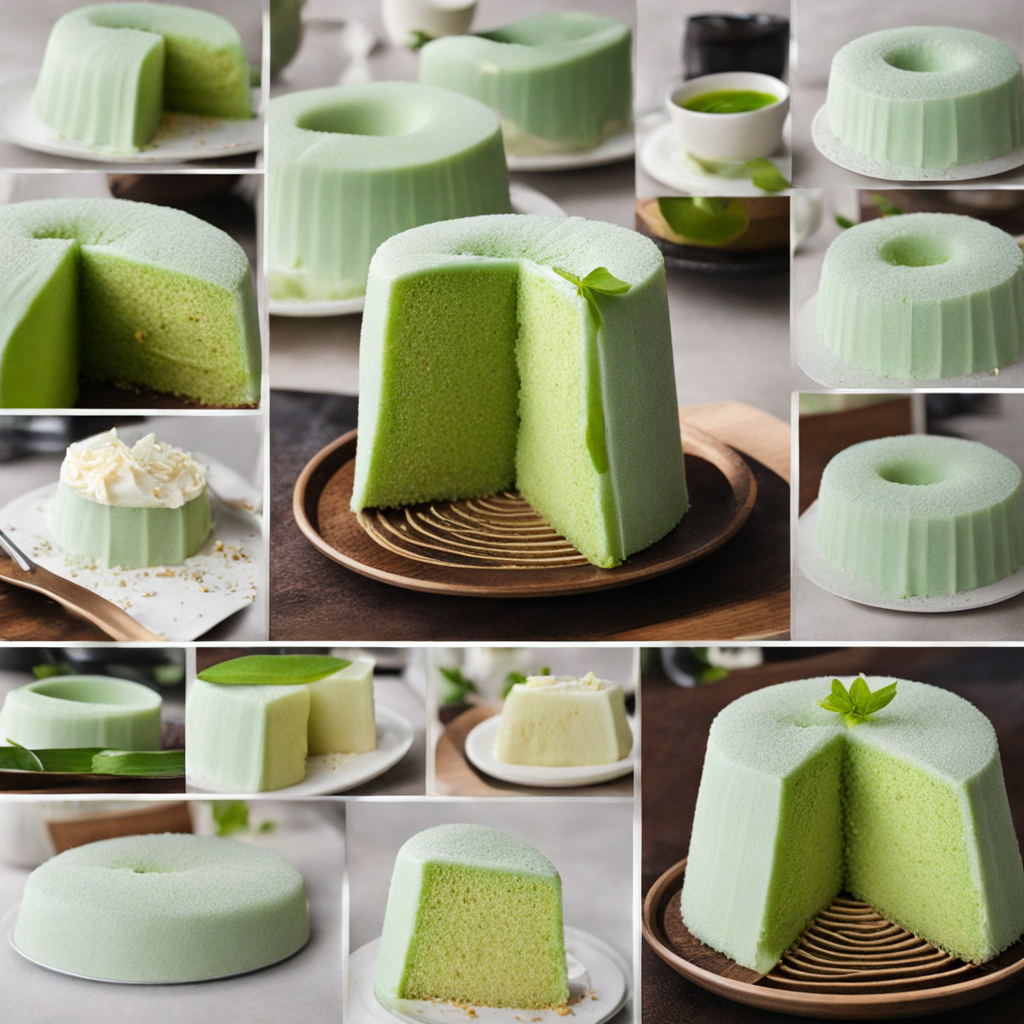Ice Kacang
Ice Kacang is a delightful dessert that hails from the vibrant streets of Singapore, showcasing a colorful medley of flavors and textures that make it a must-try for food enthusiasts. At its core, Ice Kacang is a mountain of finely shaved ice, which serves as a refreshing base to this sweet treat. The ice is typically drizzled with a variety of flavored syrups, such as rose, pandan, and gula melaka (coconut palm sugar), each adding a unique sweetness that tantalizes the taste buds. The vibrant colors of the syrups contrast beautifully against the white snow-like ice, making it as visually appealing as it is delicious. What sets Ice Kacang apart is the assortment of toppings that can be added, transforming the dessert into a personalized experience. Traditional toppings often include sweet red beans, corn, grass jelly, and agar-agar, giving each spoonful a different flavor and texture. Some variations also incorporate fresh fruits like mango or lychee, adding a juicy freshness that complements the sweetness of the syrups. The combination of crunchy, chewy, and slushy elements creates a delightful harmony that keeps you coming back for more. Enjoying Ice Kacang is not just about taste; it’s about the experience of indulging in a beloved local treat that embodies the spirit of Singapore’s multicultural food scene. Vendors often serve it in a bowl or cup, making it a portable snack perfect for enjoying while wandering through the bustling streets. As you dig into the layers of ice and toppings, you’ll discover the playful contrasts of flavors, from the rich sweetness of the syrups to the earthy notes of the beans, leaving a refreshing sensation that captures the essence of Singaporean summer.
How It Became This Dish
The Sweet Evolution of '冰糕' in Singapore: A Cultural Journey The bustling streets of Singapore, known for their vibrant food scene, are home to a delightful treat that has captured the hearts of both locals and visitors alike: '冰糕' (pronounced "bing gao"). This traditional ice dessert, often enjoyed during the sweltering tropical heat, reflects the rich tapestry of Singapore’s multicultural heritage. From its origins to its evolution, the story of '冰糕' is a fascinating journey through time and taste. #### Origin: The Beginnings of '冰糕' The origins of '冰糕' can be traced back to the early Chinese immigrants who settled in Singapore, particularly the Hokkien community. These settlers brought with them various culinary traditions from their homeland, including the concept of ice desserts. The term '冰糕' translates literally to "ice cake," which is a fitting descriptor of its texture and form. Traditionally, '冰糕' was made by freezing a mixture of water, sugar, and various flavorings, often using molds that were readily available at the time. In the late 19th and early 20th centuries, as the population of Singapore grew and diversified, so too did the food culture. The influx of immigrants from various regions, including the Chinese, Malays, Indians, and others, led to a fusion of culinary practices. This melting pot of cultures contributed to the evolution of '冰糕,' as different communities began to incorporate their unique flavors and ingredients into this frozen treat. #### Ingredients and Variations The traditional '冰糕' is a simple yet delightful concoction made from sugar, water, and flavorings. However, as the years progressed, creativity flourished among local vendors, leading to a plethora of variations. Common flavors include pandan, coconut, red bean, and even fruit extracts like mango and lychee. The addition of colorful syrups and toppings, such as sweetened condensed milk, fruit bits, and jelly, transformed '冰糕' into a more visually appealing and indulgent treat. In the 1950s and 1960s, the introduction of artificial flavorings and food colorings allowed for even greater experimentation. Vendors began to offer multi-layered '冰糕' that showcased a spectrum of colors and flavors, making them even more attractive to children and families. The playful presentation of '冰糕' as a rainbow-hued dessert became a common sight at hawker centers and street stalls, solidifying its place in Singapore’s culinary landscape. #### Cultural Significance and Social Context '冰糕' is not merely a dessert; it carries significant cultural and social implications within Singapore’s diverse society. For many, it evokes nostalgic memories of childhood and the simple joys of summer. The treat is often associated with outdoor gatherings, festivals, and family celebrations, making it a symbol of community and togetherness. During the hot and humid months, '冰糕' serves as a refreshing respite from the heat, making it a staple at local fairs and festive occasions. It has become a popular choice for celebrations like Hari Raya, Chinese New Year, and Deepavali, where vendors often tailor their offerings to reflect the cultural significance of the events. This adaptability of '冰糕' to various festivities highlights its role as a unifying food that transcends ethnic boundaries. Moreover, the hawker culture in Singapore, which has been recognized by UNESCO as an intangible cultural heritage, is closely tied to the evolution of '冰糕.' Hawker centers serve as communal spaces where people from all walks of life come together to enjoy affordable and delicious food. Here, '冰糕' stands alongside other beloved local dishes, representing the spirit of inclusivity and diversity that defines Singaporean identity. #### Modern Development and Global Recognition The late 20th and early 21st centuries witnessed a resurgence of interest in traditional foods, including '冰糕.' As Singapore increasingly positioned itself as a global culinary hub, there was a renewed appreciation for local delicacies. Chefs and food enthusiasts began experimenting with '冰糕,' elevating it to gourmet status. Modern interpretations of '冰糕' now include artisanal versions made with organic ingredients, innovative flavor combinations, and even fusion dishes that incorporate elements from international cuisines. Social media has played a significant role in bringing '冰糕' to the forefront of global culinary conversations. Instagram and food blogs have provided a platform for vendors and food lovers to showcase their creations, leading to an explosion of interest in this traditional dessert. The visually appealing nature of '冰糕' makes it a perfect candidate for social sharing, with vibrant colors and creative presentations attracting attention. In recent years, gourmet cafes and dessert shops have also introduced '冰糕' as part of their menus, often reimagining it with contemporary twists. These establishments sometimes incorporate modern techniques, such as liquid nitrogen freezing, to create a unique texture while retaining the essence of the original dessert. This blend of tradition and innovation ensures that '冰糕' remains relevant in a rapidly changing culinary landscape. #### The Future of '冰糕' As Singapore continues to evolve, so too will '冰糕.' Its ability to adapt and incorporate new flavors speaks to the vibrant food culture of the nation. The dessert's journey from humble street stalls to gourmet cafes reflects the dynamic nature of Singaporean cuisine, which thrives on diversity and innovation. In a world increasingly focused on sustainability and health, there is also a growing trend toward healthier versions of '冰糕.' Vendors are exploring natural sweeteners, fruit purees, and dairy-free options to cater to contemporary dietary preferences. This shift not only preserves the fundamental appeal of '冰糕' but also aligns with the global movement toward mindful eating. In conclusion, '冰糕' serves as a delicious reminder of Singapore's rich history and cultural diversity. From its humble beginnings as a simple frozen treat to its status as a symbol of community and celebration, '冰糕' encapsulates the essence of Singapore’s food heritage. As it continues to evolve, it will undoubtedly remain a cherished part of the nation’s culinary landscape, delighting generations to come with its sweet, icy allure.
You may like
Discover local flavors from Singapore


